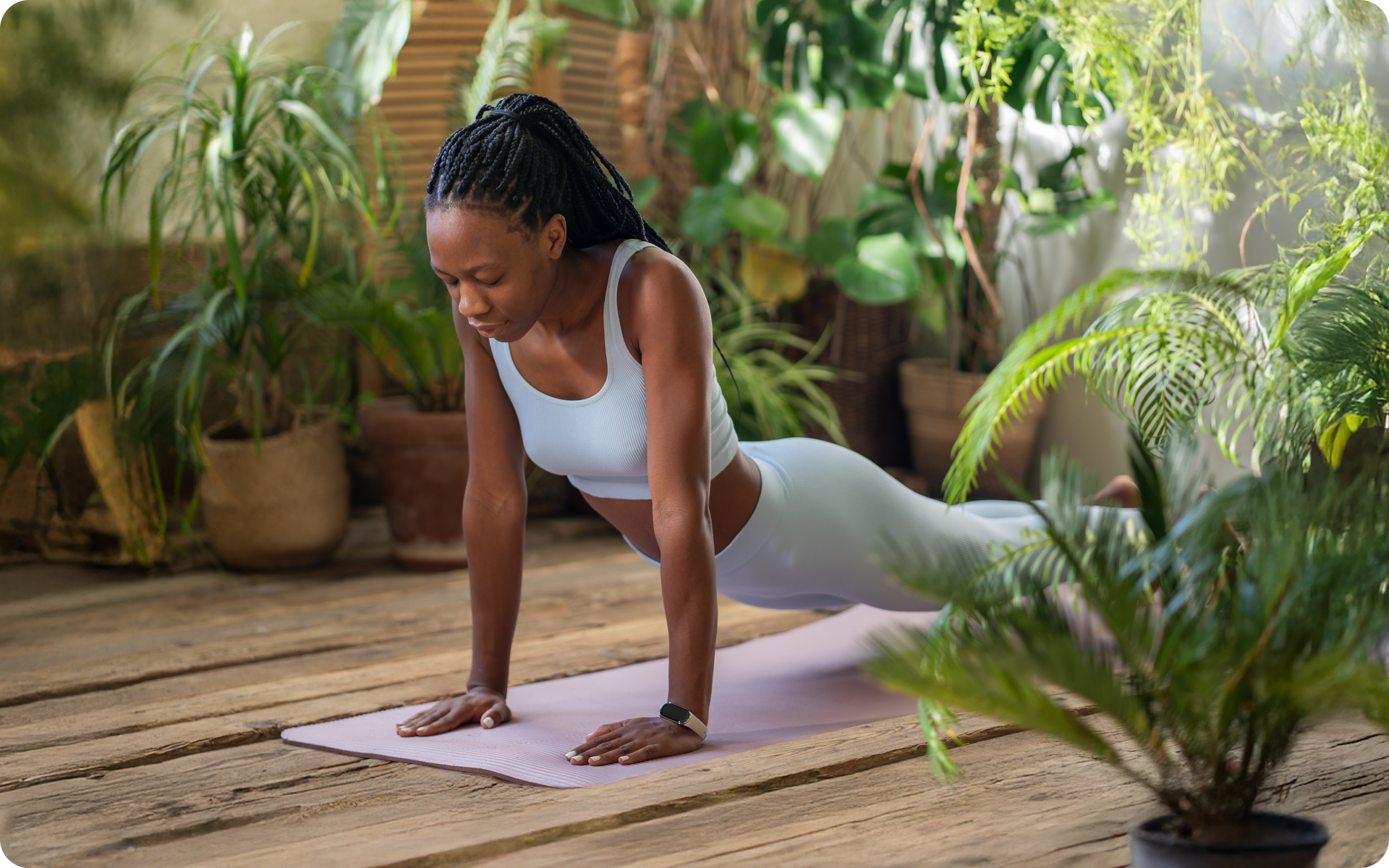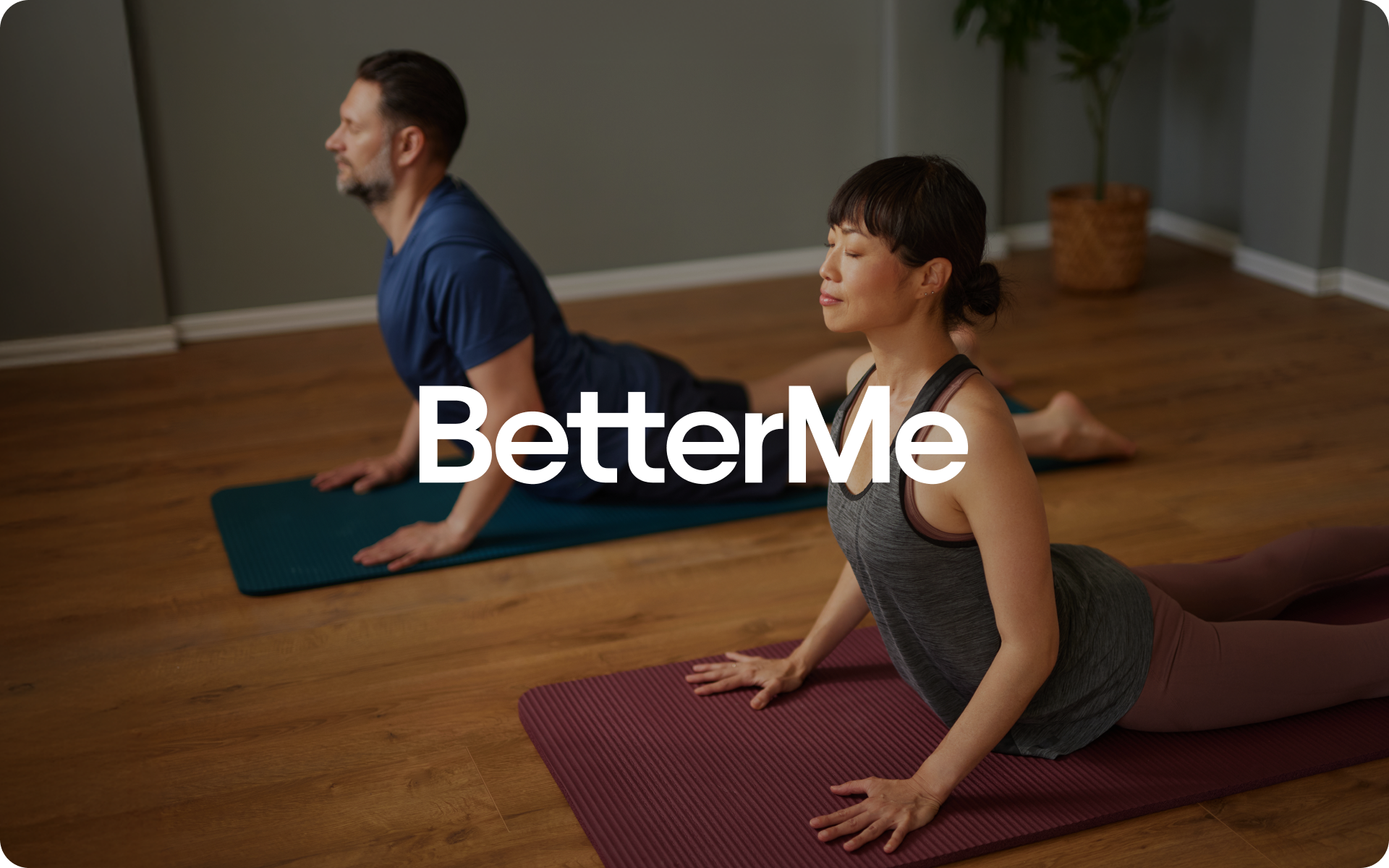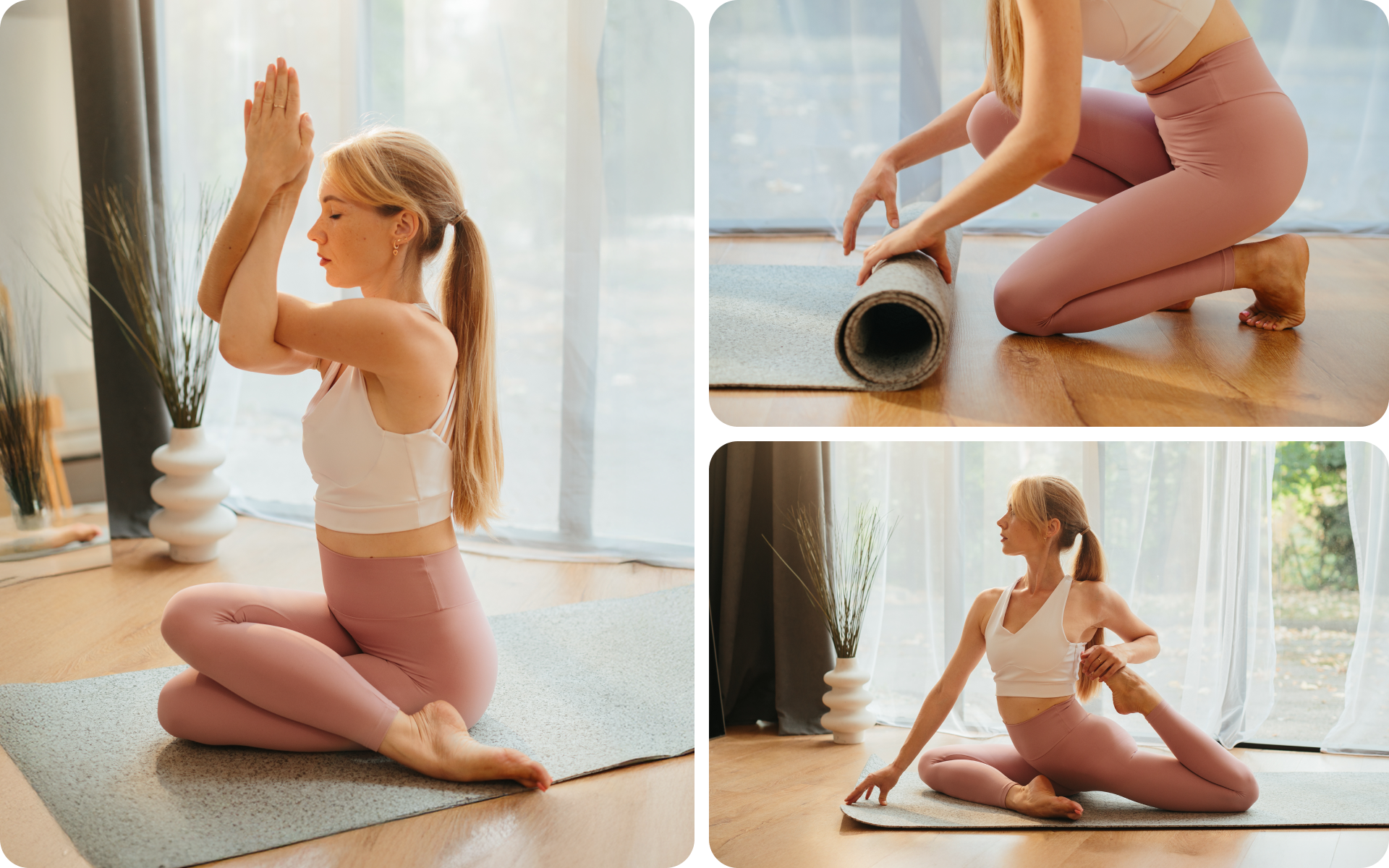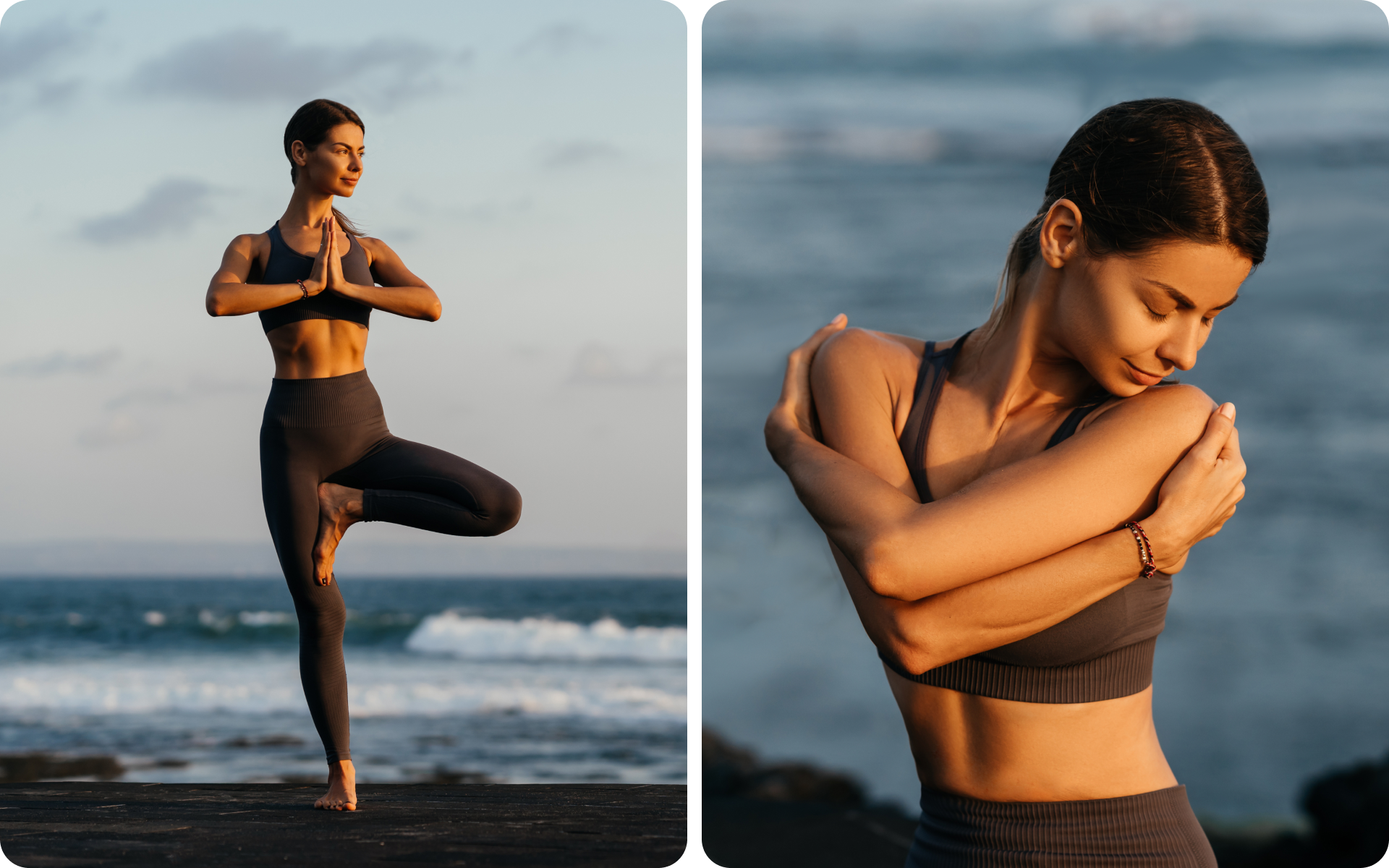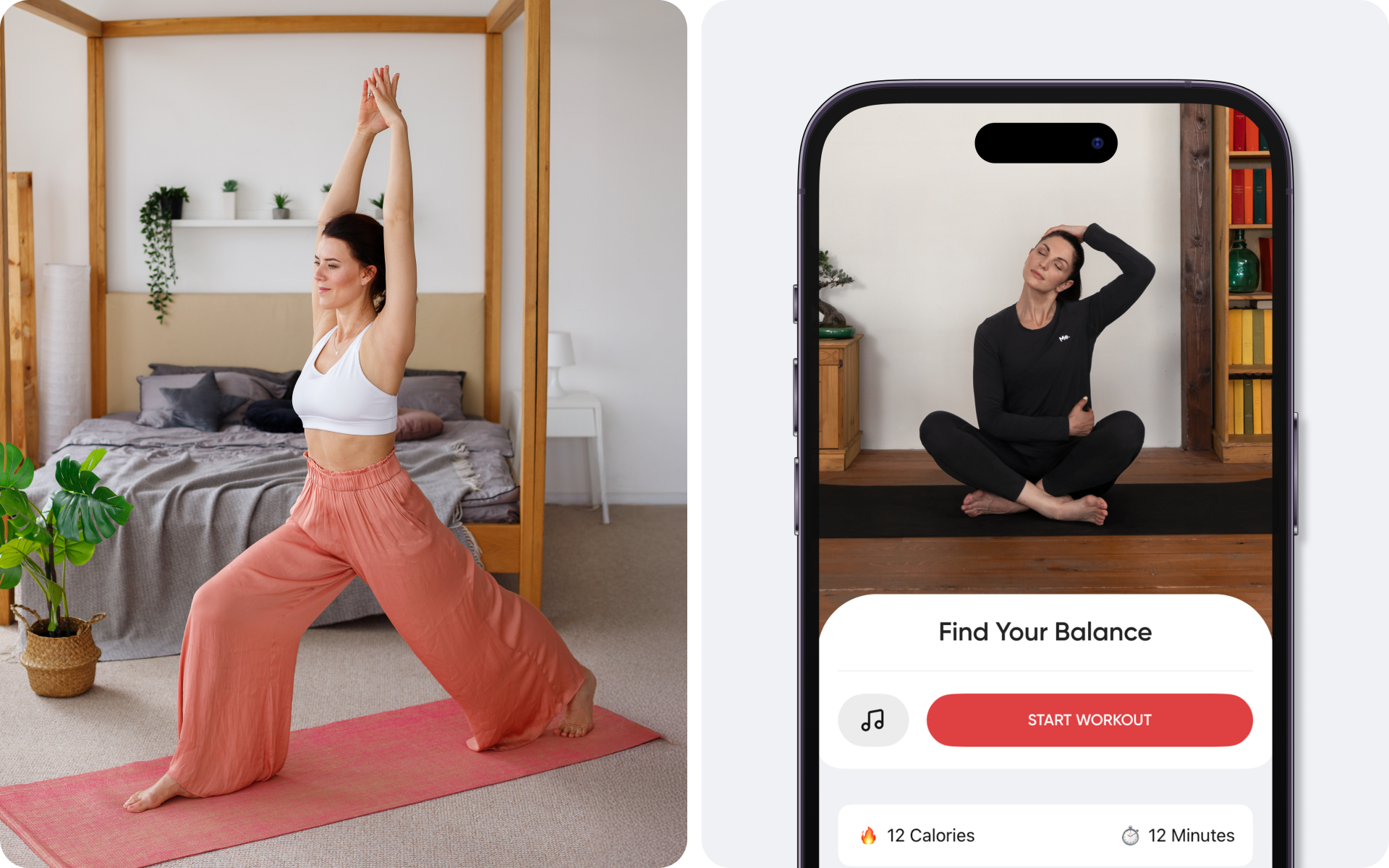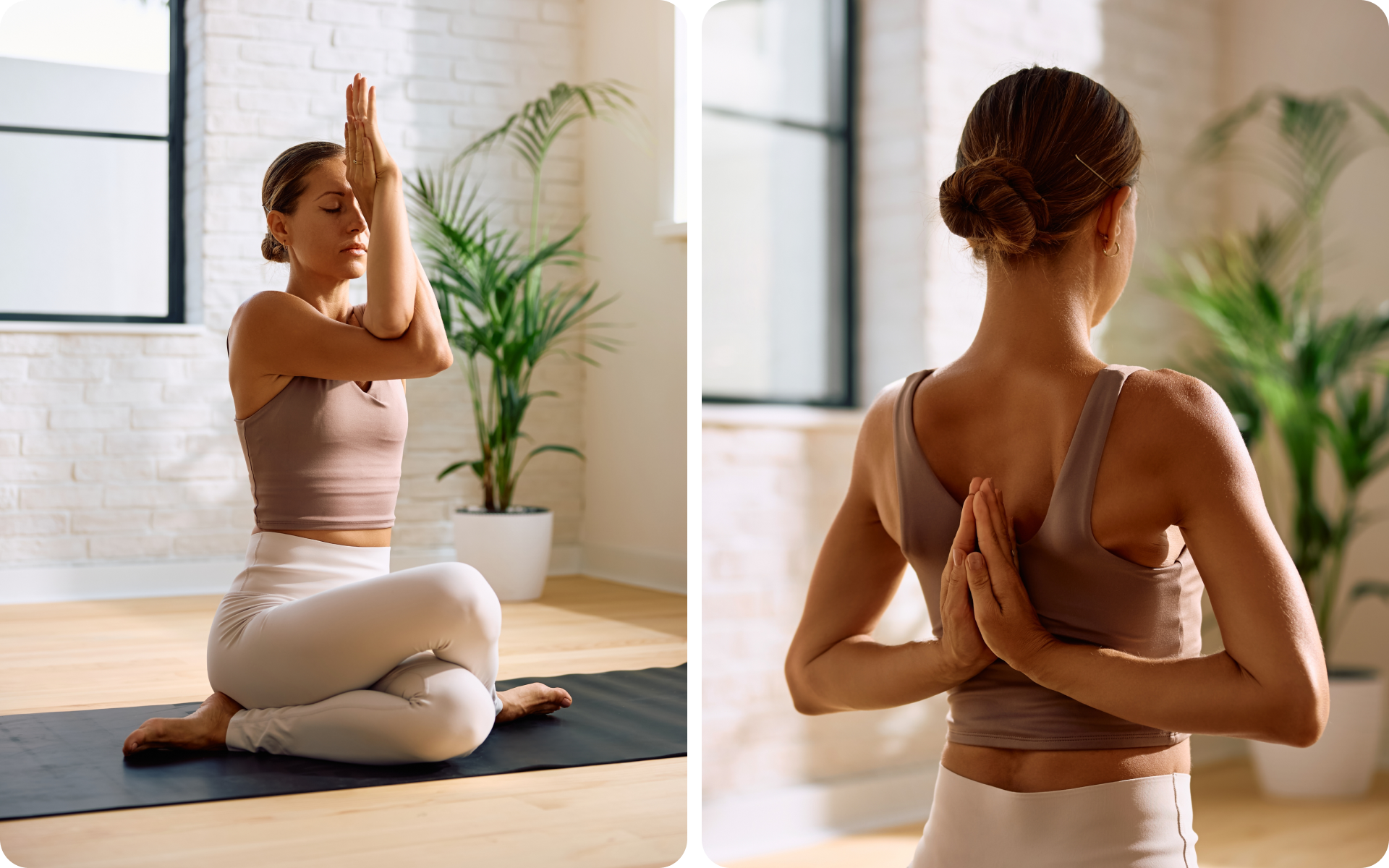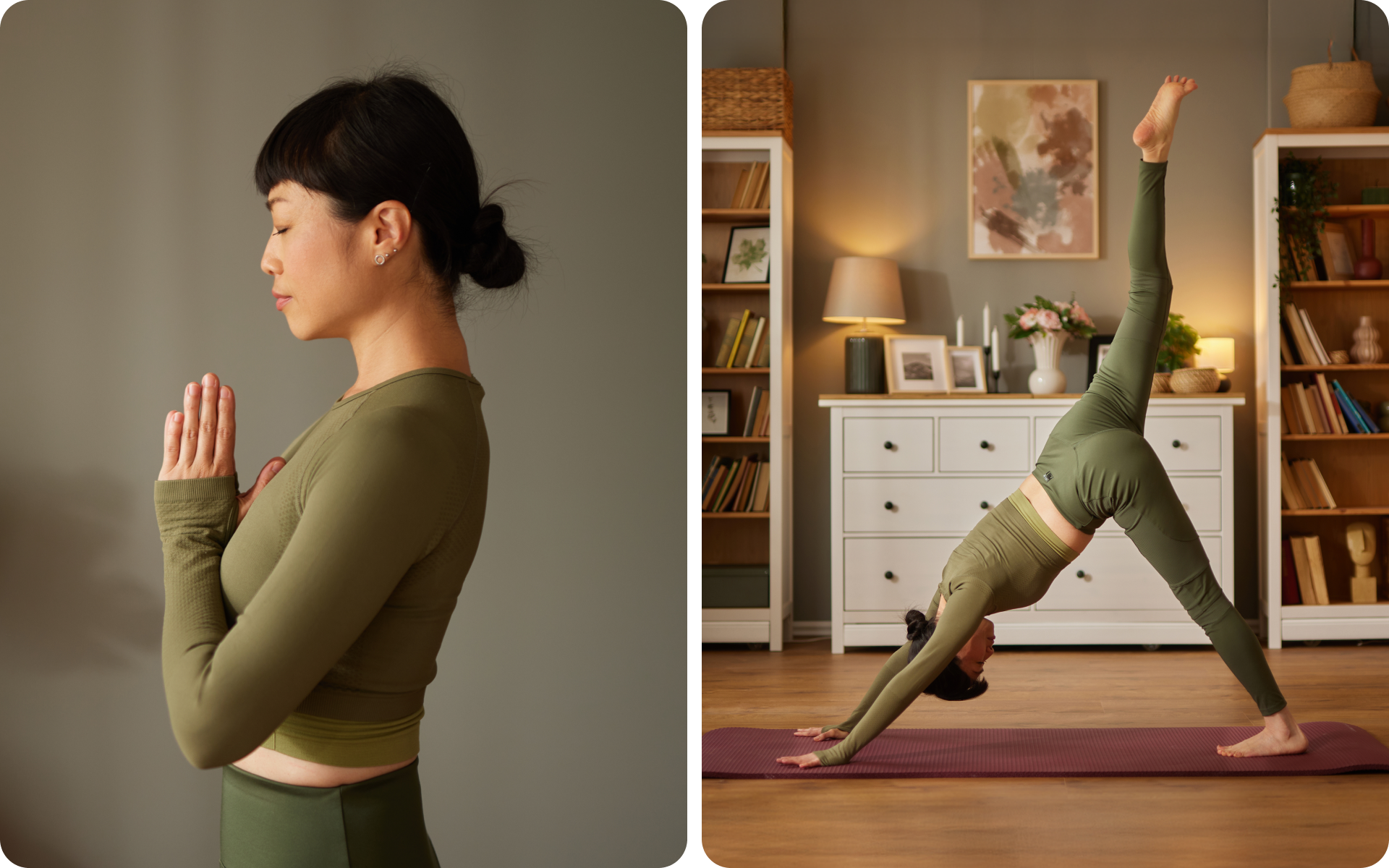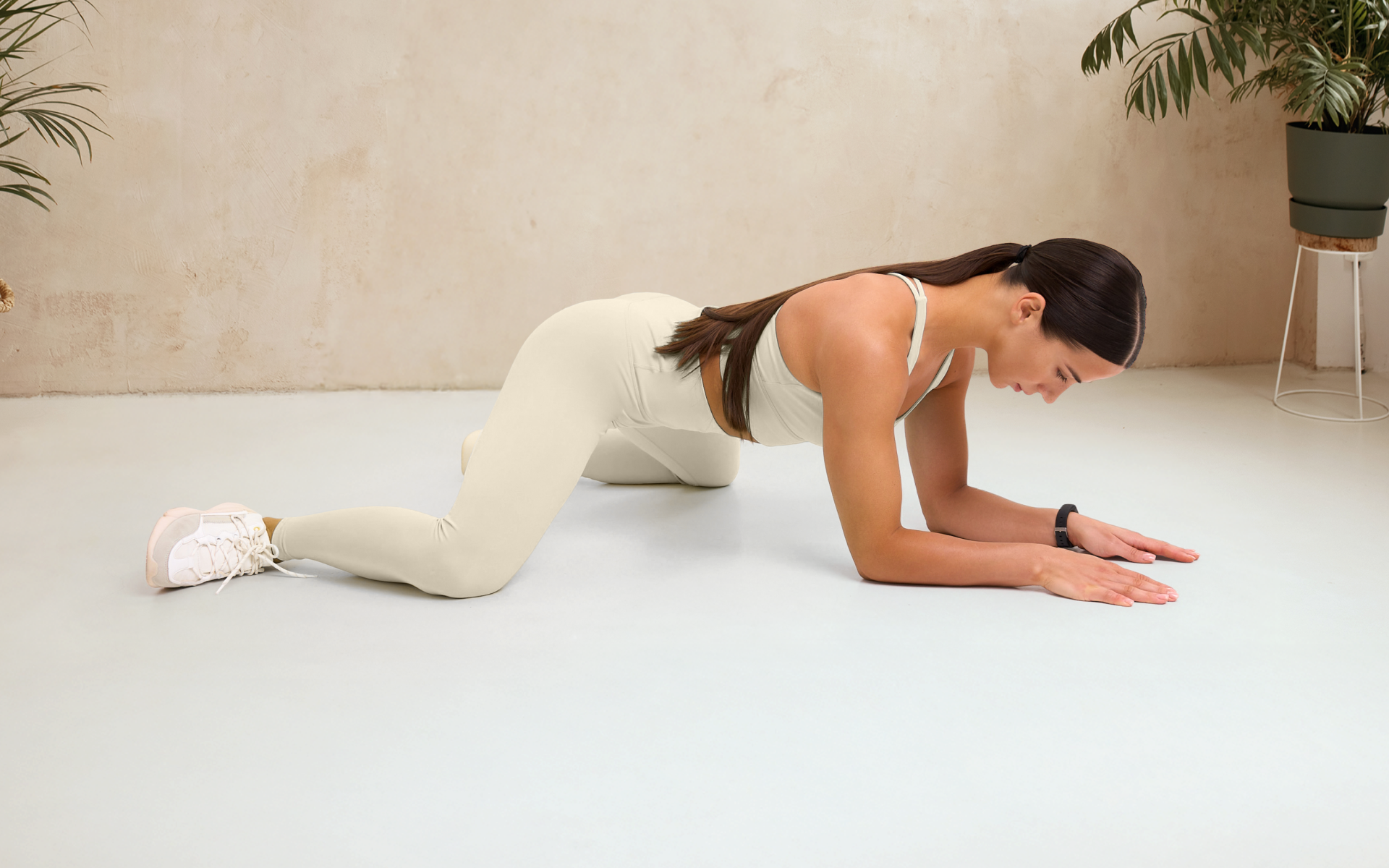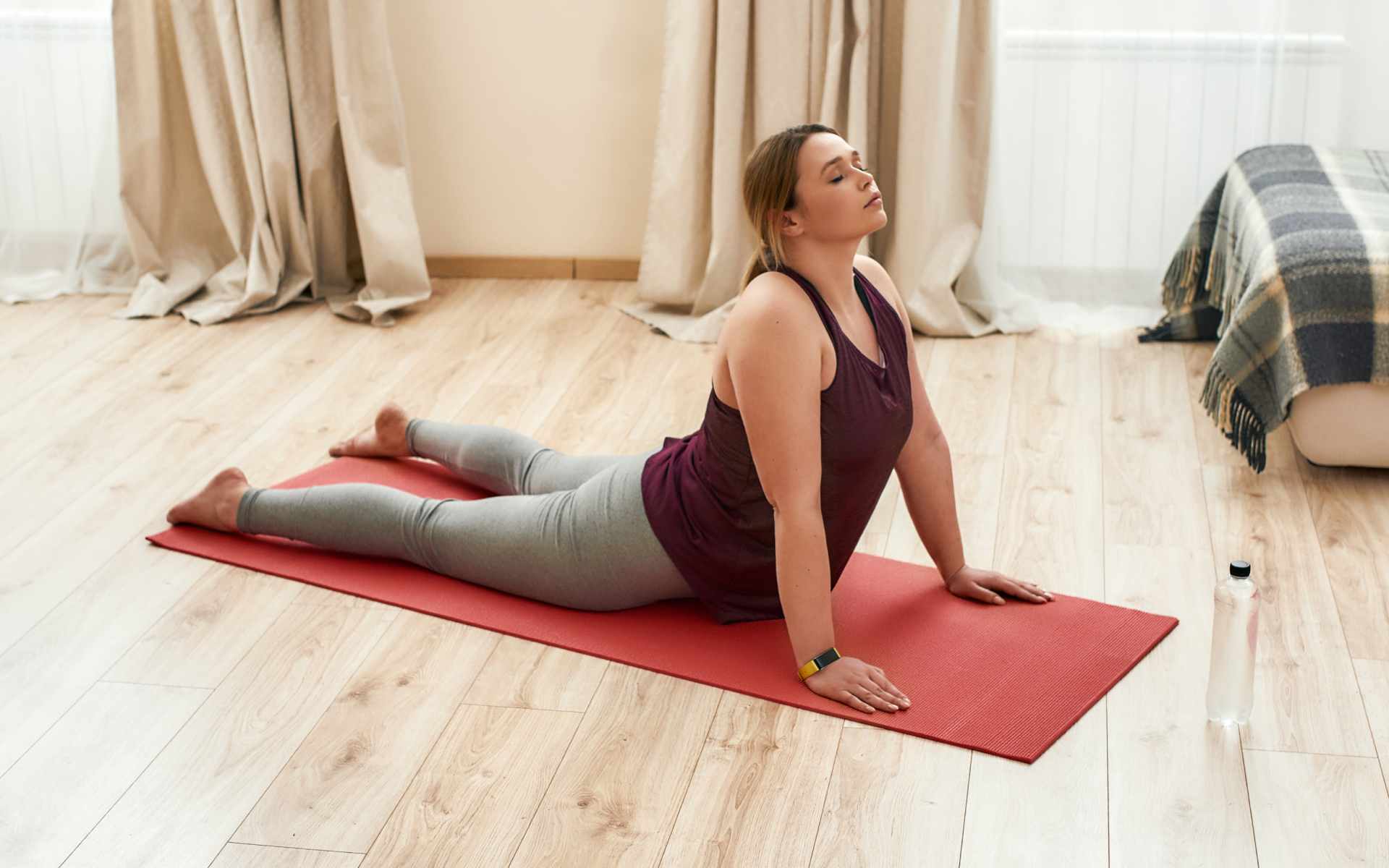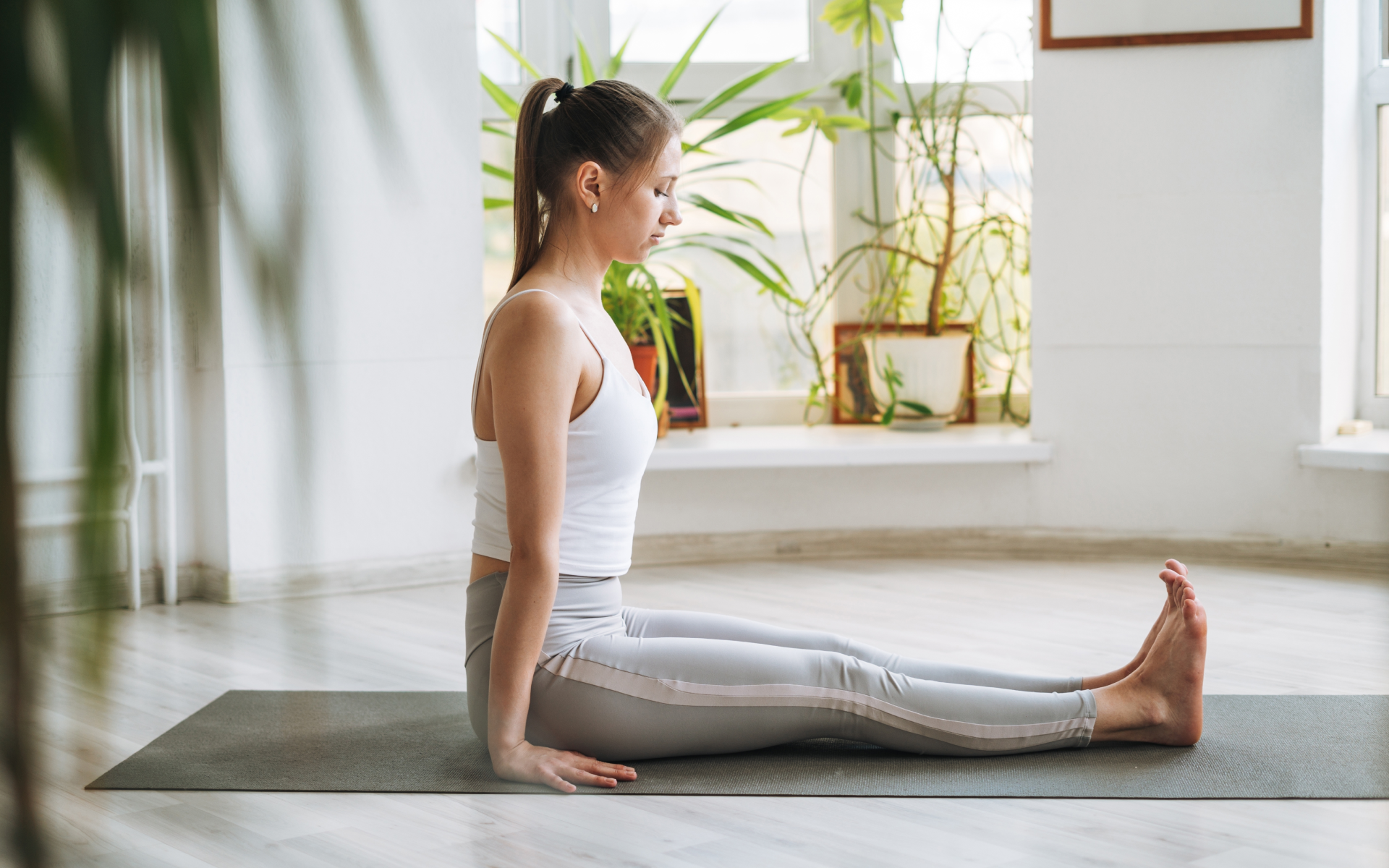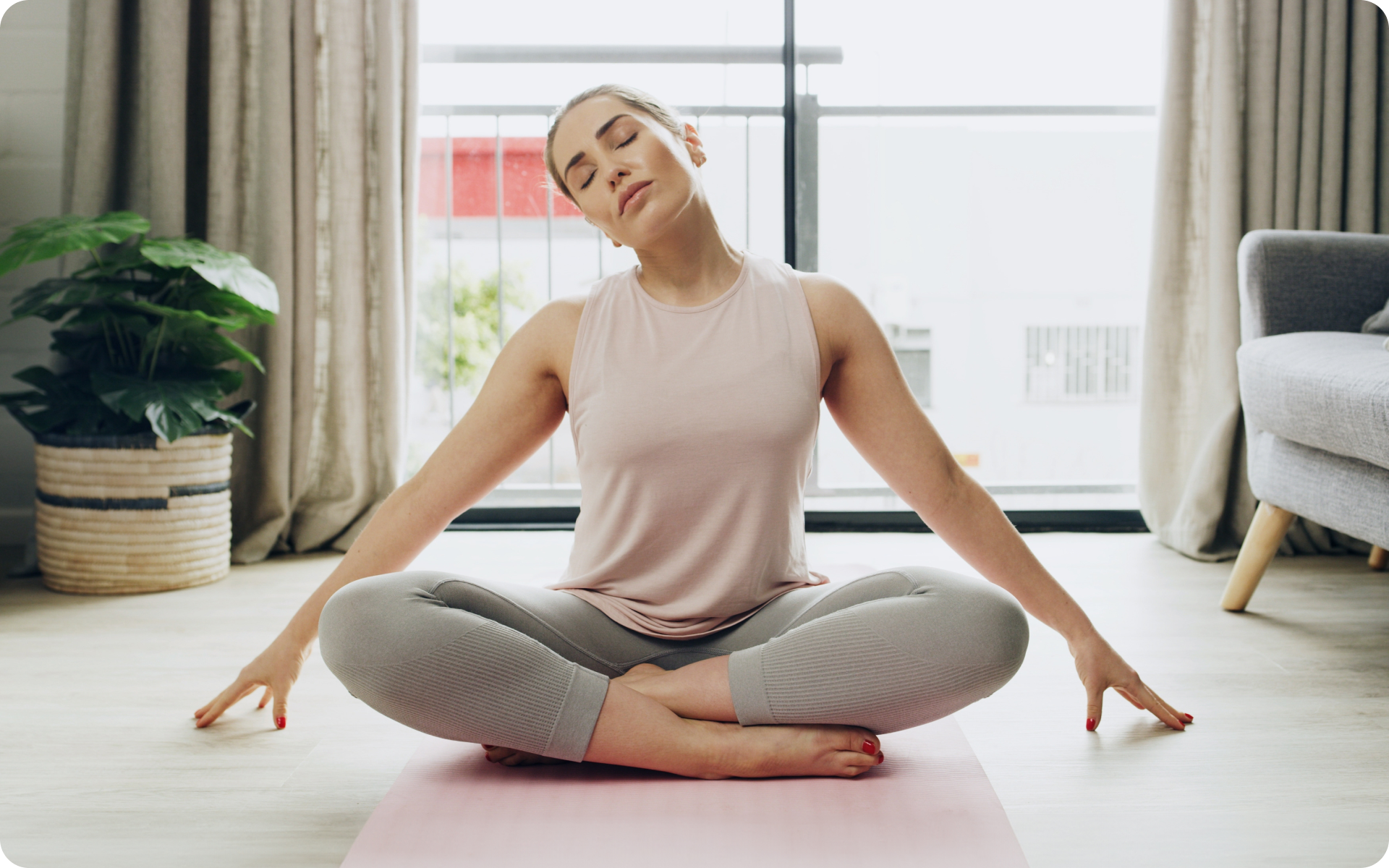Keeping up with the pace of busy life these days can be pretty exhausting. Hectic work routines and tight schedules drain us and make us feel stressed and burnt out. If you constantly feel stressed, weary, and tired, it’s time to rest and focus on the inside. Concentrate on what your body tells you and calm your body with somatic exercises.
Now you may be wondering what somatic exercise is. If you’re new to this concept or you’ve only heard it discussed, hang tight as we explain it in detail.
What Does Somatic Mean?
Somatic is derived from a Greek word, “Soma”, which means body. Somatic means “of or relating to the living body”.
Somatic has since been used to describe various practices, including somatic movement, somatic routine, somatic relaxation, or somatic education (1). These approaches are categorized as bottom-up processing. These are based on the idea of exploring our bodily sensations, which are linked to our conceptual thoughts.
For example: Siegel (2012) gave an illustrative example of a person seeing a rose. The bottom-up experience senses the rose “as if it were the first time, exciting curiosity”. In contrast, the top-down experience recognizes it as a red flower. It identifies the rose according to the coalesced summary of previous experiences with roses (17).
According to Mr. Hanna, somatic movement helps the brain slow down and focus on what is happening in your body as you move. In his book, he emphasizes how athletes watch slow-motion films during sports training to be more attentive and learn the techniques of each movement or strike.
This helps the brain be more focused. He also explains that when you perform the activities slowly, your somatic brain takes over and helps you feel more calm and relaxed.
What Is the Purpose of the Somatic Movement?
Somatic movement is performed consciously to focus on the internal senses and awareness of the movement rather than the external appearance or result. This may include stretching or bending down to tie a lace after waking up.
Over the years, your body has been conditioned to do these activities. You don’t feel the sensations of doing these movements. Somatic movement helps you slow down and focus on each movement. In this way, you connect with your internal body and understand various signals your body may send (2).
What Is a Somatic Routine?
A somatic routine consists of exercises that are done to listen to your body’s internal signals. These may include gentle stretching or yoga. Compared to other traditional exercises that focus on external benefits such as weight loss or muscle gain, somatic exercises help you slow down and focus on each movement. They help you gain heightened awareness about your body. For example, if you’re under constant stress, performing somatic exercises for stress such as somatic stress relief yoga may help your body release tension stored in the body due to distress. Integrating somatic exercises with a balanced diet and other physical activities can support sustainable weight loss and overall wellness.
What Are Examples of Somatic Movement?
Somatic exercises typically emphasize mindful awareness, conscious movement, and a deep connection between the body and mind. The activities below may help reduce distress and are also beneficial for improving posture, increasing body awareness, enhancing movement efficiency, reducing tension and pain, increasing flexibility, and developing a deeper understanding of the mind-body connection (1).
These somatic movement exercises should be practiced with the support or guidance of a trained practitioner.
- Rolfing
Rolfing, also known as structural integration, is a form of bodywork that was developed by Dr. Ida Rolf (3). It’s a complementary therapy and falls outside of conventional medical practices to address physical and sometimes emotional issues through manual manipulation of the body’s fascia (connective tissue) and focused movement education. The idea behind Rolfing is that your body experiences distress and discomfort when it’s out of proportion or misaligned.
This makes you feel tense and sluggish. Rolfing is a type of deep tissue manipulation where practitioners called Rolfers manipulate fascia (the connective tissue surrounding your bones, organs, muscles, and nerves) and rectify structural imbalances within the body.
Rolfing is usually done in 10 practical sessions, often known as the recipe, where Rolfers indulge in manual therapies and massage the pain points throughout the body. Each session lasts approximately 60 minutes (3).
The first three sessions focus on superficial tissues, the next four focus on deeper tissues, and the final three address the entire body.
According to the Dr. Ida Rolf Institute, Rolfing helps alleviate muscle tension, soreness, and chronic pain, improves posture, and negates stress (4).
BetterMe: Health Coaching app helps you achieve your body goals with ease and efficiency by helping to choose proper meal plans and effective workouts. Start using our app and you will see good results in a short time.
- Body-Mind Centering (BMC)
Body-mind centering is another excellent somatic exercise and it was developed by movement expert Bonnie Bainbridge Cohen (5). It’s an integrated approach to enhancing your mind-body connection and helping you express yourself better. BMC is an approach that fits within the realm of somatic therapy, as it involves experiential movement, touch, and awareness to facilitate a deeper understanding of the body-mind connection and promote mental and physical well-being.
Body-mind centering uses anatomy, physiology, psychology, and development principles and focuses on movement, touch, voice, and consciousness. The main purpose of BMC is to be more self-aware and focus on your body as it holds vast knowledge about your thoughts and emotions.
By doing BMC, you can tune into your internal self, reshape your thinking, and improve your well-being. According to Miss Cohen, BMC helps people improve their posture and flexibility by releasing muscle tension (5).
Individuals who do yoga, dance, psychotherapy, music, child development, and other body-related disciplines use BMC to enhance their experience.
- Alexander Technique
If you suffer from poor posture, try the Alexander Technique. Developed by Frederick Matthias Alexander, the Alexander Technique helps individuals alter their habits and free their bodies of unnecessary tension. The Alexander Technique aligns with somatic education principles by focusing on sensory awareness, self-perception, and conscious movement.
The basic idea is to do daily movements easily by exerting minimal effort and mitigating extra tensions you carry in your body all day. It’s not a series of sessions, but an active approach to learning the basics of fluid body movements. The technique emphasizes the integration of mind and body in everyday activities.
According to the Alexander Technique’s official website, this approach is particularly beneficial for those who are suffering from carpal tunnel syndrome, repetitive strain injuries, and discomfort after sitting for a long time (6).
It’s also useful for singers, athletes, and performers who are facing issues with not performing at their best. The founder Frederick Matthias Alexander discovered this approach after he met the problem of voice loss during public speaking.
According to the UK National Health Service, Alexander Technique is useful for chronic back and neck pain and helps individuals cope with Parkinson’s disease (7).
- Feldenkrais Method
The Feldenkrais Method was developed by Moshe Feldenkrais and is used to improve body movements as it repairs the connections between the motor cortex and the body. This method aims to improve gait and body movements and increase the range of motion. The Feldenkrais Method is based on principles of physics, biomechanics, and human development (8).
Feldenkrais Method is usually practiced in two ways, Awareness Through Movement (AMT) and Functional Integration. Awareness Through Movement is taught in groups where individuals follow their teacher’s instructions through slow, gentle movements. In contrast, Functional Integration is a one-on-one lesson where the practitioner guides the student’s movements according to the individualized learning plan through soft, non-invasive touch.
- Laban Movement Analysis (LMA)
Laban Movement Analysis or Barteniff Movement Analysis is an alternative medical method for observing, describing, and interpreting human movement. The technique was originally developed by Rudolf Laban and further developed by Lisa Ullmann, Warren Lamb, and Irmgard Barteniff (9).
Laban Movement Analysis is derived from anatomy, psychology, and kinesiology principles. Professionals such as dancers, athletes, psychotherapists, occupational therapists, and musicians use LMA to improve their practice. It’s also used in business consulting and leadership development as LMA’s emphasis on movement qualities, spatial relationships, and expressive gestures and can provide valuable insights into how individuals present themselves, collaborate, and engage with others in professional environments.
Rudolf Laban’s student Irmgard Barteniff further categorized LMA into four aspects, the Body, Shape, Space, and Effort, or the BESS (18).
1. Body
This includes the interrelationships within the body and how the body moves. It also consists of the body shape, posture, and the way it takes up space. For example, a person may move by taking big steps or gliding with small, contained movements.
2. Effort
This includes the qualities of movement. For example, actions can be light or strong, free-flowing or tense, quick or sustained.
3. Shape
This refers to how the body changes shape and the motivations behind this. It also refers to the patterns that movements create in space. Movements can be linear, curved, twisting, or a combination of these shapes.
4. Space
This refers to where the body is moving and how the movements relate to the surrounding area. It examines whether movements are directed forward, backward, upward, downward, or sideways, as well as how much space a person occupies with their movements.
Laban Movement Analysis may also include other categories such as relationship and phrasing. Relationship refers to the interaction between people or an object within the context of movement. In comparison, phrasing refers to personal expression and timing of movement.
Laban Movement Analysis helps us gain insight into individuals’ intentions, emotions, and personality traits through their movements by observing and analyzing these components.
In addition to these somatic movement exercises, you can also perform somatic yoga. The basic difference between traditional and somatic yoga is the focus on body movements and breathwork. In somatic yoga, you focus inward and put your attention into feeling your body movements and sensations (19).
In somatic yoga, practitioners are encouraged to explore movements slowly and focus on how each movement feels instead of trying for a specific end posture. This approach allows individuals to release tension, improve flexibility, and enhance body awareness.
Somatic yoga should be practiced with a certified somatic yoga instructor with specific training. Somatic yoga strongly emphasizes internal sensations, proprioception, and the mind-body connection.
Read more: Daily Somatic Exercises To Reduce Stress And Strengthen The Mind-Body Connection
What Is an Example of Somatic Movement?
Encountering a distressing event or struggling to manage the pressures of daily life and meet its demands can result in physical and emotional breakdowns. These unresolved emotional issues are often stored in the body. Somatic movement recognizes that your physical sensations, emotions, and thoughts are all intertwined and that addressing bodily sensations can lead to improved physical and emotional well-being.
Somatic movement aims to rejuvenate the mind-body connection. A somatic therapist guides exercises to enhance the internal awareness of your body and its functions. They help you process stored unresolved conflicts and enhance the self-regulation of emotions. This process leads to improved emotional health and builds resilience in the individual.
You may be confusing somatic movement with psychotherapy, but that’s not the case. Psychotherapy only focuses on the mind, while somatic therapy focuses on the internal senses and the body primarily. Somatic movement is often incorporated as a complementary practice to enhance therapeutic outcomes, but it is primarily centered on the body’s sensory experience.
Experiencing a distressing event could lead to you storing unresolved emotions in your body, which, if left unaddressed, could lead to somatization. Somatization is expressing distress or feelings through physical symptoms such as chronic back and neck pain. Research has shown that most individuals who are suffering from post-traumatic stress disorder (PTSD) often face the issue of chronic pain (10).
Whether you’re a workout beast or just a beginner making your first foray into the world of fitness and dieting – BetterMe has a lot to offer to both newbies and experts! Install the app and experience the versatility first-hand!
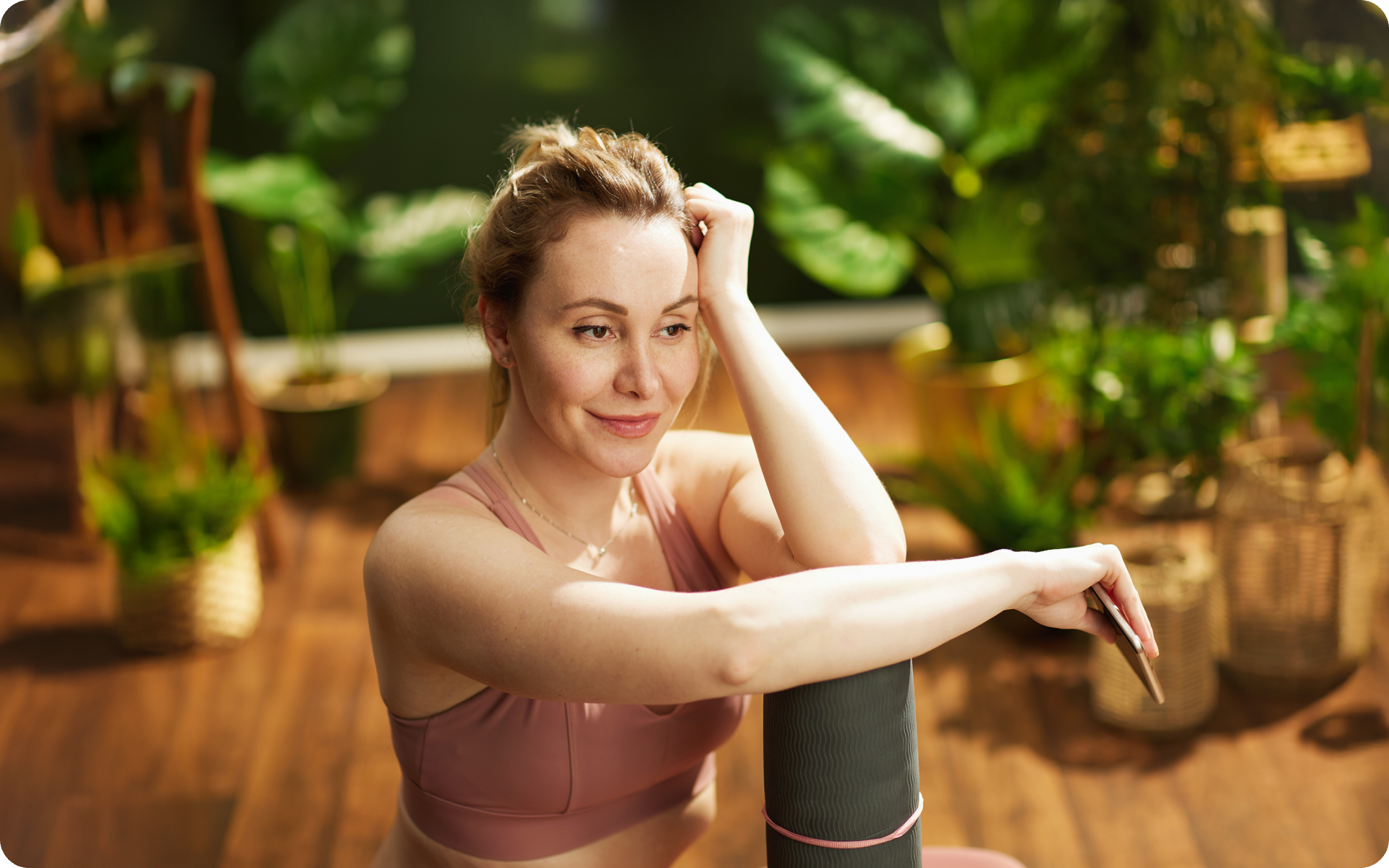
Below are some of the somatic exercises for adults (12):
- Body awareness
With this technique, you’re taught to identify areas of stress and tension in your body. You’re then subjected to calming thoughts to ease your mind.
- Grounding
With this technique, you’re guided to connect your body to the earth deeply. This exercise helps you enhance internal awareness and be connected to the present moment. For example, the therapist may ask you to feel your feet on the ground and focus on your body movements.
- Deep Breathing
Deep breathing exercises, such as diaphragmatic breathing and box breathing, help regulate the autonomic nervous system, reducing stress and promoting relaxation. By focusing on slow, controlled breaths, you can activate the parasympathetic nervous system, which signals the body to relax. This practice increases oxygen flow, lowers heart rate, and enhances body awareness, which makes it an effective tool for stress and anxiety management. Regular deep breathing can also improve emotional regulation and mental clarity (20).
- Progressive Muscle Relaxation (PMR)
PMR involves systematically tensing and releasing different muscle groups to relieve physical tension and promote relaxation. This practice enhances proprioception (awareness of the body in space) and helps you identify areas of chronic tightness(20). By consciously relaxing muscles, PMR trains the nervous system to shift from a stress response to a state of calm. It’s particularly beneficial for those with anxiety, sleep disturbances, and chronic pain.
- Somatic Yoga
Somatic yoga differs from traditional yoga by focusing on slow, mindful movements rather than achieving perfect poses. Movements such as cat-cow, reclined twists, and bridge pose encourage awareness of bodily sensations, which helps release stored tension and trauma (21). The goal is to enhance neuromuscular awareness, allowing the body to move more freely without unconscious holding patterns. By emphasizing internal experience over external form, somatic yoga supports nervous system regulation and emotional healing.
- Body Scanning
Body scanning is a mindfulness technique where you mentally scan your body from head to toe, bringing awareness to sensations, tension, or discomfort. This practice helps you recognize and release areas of stress, improving your connection to bodily signals (22). By focusing attention inward, body scanning fosters relaxation and deepens self-awareness. It’s often used in meditation and stress reduction programs, such as mindfulness-based stress reduction (MBSR).
- Tremoring Techniques (TRE)
Tremoring techniques, such as trauma release exercises (TRE), activate natural, involuntary shaking or vibrations in the body to discharge stored stress and trauma. This response is a natural way for the nervous system to reset after periods of high tension or emotional distress. By allowing the body to shake without resistance, TRE helps release deep-seated muscular tension and promotes relaxation (23). These exercises are widely used for trauma recovery, stress relief, and improving overall nervous system health.
Read more: Somatic Exercises for Releasing Grief
What Are the Benefits of Somatic Exercises?
Some practitioners recommend structured plans such as the 28-day somatic exercise for trauma relief, which focus on gradual and consistent practice to release tension and trauma stored in the body. Others highlight the importance of somatic exercises to release trauma, which involve gentle movements and awareness exercises that help you process and let go of stored emotional pain. These exercises routinely will help you combat years of muscle tension and soreness.
Remember to consult your physician before you exercise, particularly if you have any medical condition. You should also consult a somatic therapist or expert before you start this journey to avoid mishaps.
Some of the most considerable somatic exercise benefits are:
Body Tension Relief
Somatic exercises focus on the signals your body may send regarding discomfort, pain, or tension. When you fully concentrate on your body, you can identify the root causes behind your pain and mitigate pain by changing your body movement or posture.
A study revealed that the Rosen Method helps alleviate pain and fatigue in individuals with chronic back pain (13). Another 2017 study found that the Feldenkrais Method treats chronic back pain (14).
Improves Emotional Awareness
Somatic exercises also help improve your emotional well-being. A study found that Laban Movement Analysis helped individuals nurture resilience and equip them with tools for self-efficacy by enhancing their ability to emotionally adapt to challenges by regulating their movement responses (15).
Improves Mobility
Somatic exercises also benefit individuals with mobility issues. According to a 2017 study, individuals who practiced the Feldenkrais Method experienced a significant improvement in their mobility after 12 lessons (16).
Meditation has a somatic element if you pay attention to your inner body. Its anchors could be your breath or the sensation of blood flowing throughout your body. Some forms of meditation, such as mindfulness-based stress reduction (MSBR) and mindfulness-based therapy (MBT), integrate somatic principles to create a more holistic approach to help achieve mental well-being (24). Tai chi is considered a somatic element as it involves a mind-body connection. It requires taking slow movements, controlling breathing, and performing the procedure meditatively. All of these factors make tai chi a somatic type of activity. Dance is somatic if you focus on your body and perform small and gentle movements. Mostly, dancing is external, and you aren’t paying much attention to your body. Dance movement therapy (DMT), in the realm of somatics, can help individuals feel themselves and deal with their emotional turmoil (25). Remember that a trained therapist should guide these movements. Yes, somatic workouts are effective for improving mental and physical well-being by enhancing body awareness, reducing tension, and releasing stored trauma. Studies have shown that practices such as somatic therapy exercises, yoga, and methods such as the Feldenkrais and Alexander Techniques help alleviate body tension, improve mobility, and foster emotional resilience.Frequently Asked Questions
Is meditation a somatic exercise?
Is tai chi a somatic practice?
Is dancing somatic therapy?
Do somatic workouts really work?
The Bottom Line
Basically, somatic exercise offers a powerful gateway to rediscovering the potential of your body to improve mental and physical well-being. It encourages you to be present, listen to your body, and embrace the subtle nuance of your movements.
We hope you got the answers to your queries regarding somatic exercise. Performing these exercises routinely will help you combat years of muscle tension and soreness. Remember to consult your physician before exercising, particularly if you have any medical condition. You should also consult a somatic therapist or expert before you start this journey to avoid mishaps.
DISCLAIMER:
This article is intended for general informational purposes only and does not serve to address individual circumstances. It is not a substitute for professional advice or help and should not be relied on for making any kind of decision-making. Any action taken as a direct or indirect result of the information in this article is entirely at your own risk and is your sole responsibility.
BetterMe, its content staff, and its medical advisors accept no responsibility for inaccuracies, errors, misstatements, inconsistencies, or omissions and specifically disclaim any liability, loss or risk, personal, professional or otherwise, which may be incurred as a consequence, directly or indirectly, of the use and/or application of any content.
You should always seek the advice of your physician or other qualified health provider with any questions you may have regarding a medical condition or your specific situation. Never disregard professional medical advice or delay seeking it because of BetterMe content. If you suspect or think you may have a medical emergency, call your doctor.
SOURCES:
- A Brief Intro to the World of Somatics (2020, healthline.com)
- What Is Somatic Stretching? How It Works, Benefits, and Stretches for Beginners (2022, everydayhealth.com)
- Rolfing therapy: Technique, benefits, and more (2022, medicalnewstoday.com)
- What is Rolfing? (n.d., rolf.org)
- BODY-MIND CENTERING (n.d., bonniebainbridgecohen.com)
- What is the Alexander Technique? (n.d., alexandertechnique.com)
- Evidence for the effectiveness of Alexander Technique lessons in medical and health-related conditions: a systematic review (2012, pubmed.ncbi.nlm.nih.gov)
- Feldenkrais Method (2007, sciencedirect.com)
- Laban movement analysis (n.d., wikipedia.org)
- Chronic pain in refugees with posttraumatic stress disorder (PTSD) (2019, pubmed.ncbi.nlm.nih.gov)
- Chronic Stress, Cortisol Dysfunction, and Pain (2014, pubmed.ncbi.nlm.nih.gov)
- All About Somatic Therapy (2021, psychcentral.com)
- Better or Worse: a Study of Day-to-Day Changes over Five Months of Rosen Method Bodywork Treatment for Chronic Low Back Pain (2013, pubmed.ncbi.nlm.nih.gov)
- Improved interoceptive awareness in chronic low back pain (2016,
- A Somatic Movement Approach to Fostering Emotional Resiliency through Laban Movement Analysis (2017, ncbi.nlm.nih.gov)
- Feldenkrais Movement Lessons Improve Older Adults’ Awareness, Comfort, and Function (2017, pubmed.ncbi.nlm.nih.gov)
- Pause, Breathe, and Feel (n.d., ibpj.org)
- Bartenieff Fundamentals (n.d., exhibitions.lib.umd.edu)
- Ultimate Guide to the Top 5 Differences: Somatic Yoga vs Traditional Yoga (n.d., eaglesnestatitlan.com)
- Effectiveness of Progressive Muscle Relaxation, Deep Breathing, and Guided Imagery in Promoting Psychological and Physiological States of Relaxation (2021, pmc.ncbi.nlm.nih.gov)
- A randomized clinical trial of mindfulness meditation versus exercise in Parkinson’s disease during social unrest (2023, pmc.ncbi.nlm.nih.gov)
- Mind-body therapy for treating fibromyalgia: a systematic review (2024, pmc.ncbi.nlm.nih.gov)
- “Like a Vibration Cascading through the Body”: Energy-Like Somatic Experiences Reported by Western Buddhist Meditators (2021, researchgate.net)
- Treatment of anxiety in autistic adults: A systematic review (2022, sciencedirect.com)
- The role of dance movement therapy in enhancing emotional regulation: A literature review (2024, pmc.ncbi.nlm.nih.gov)
